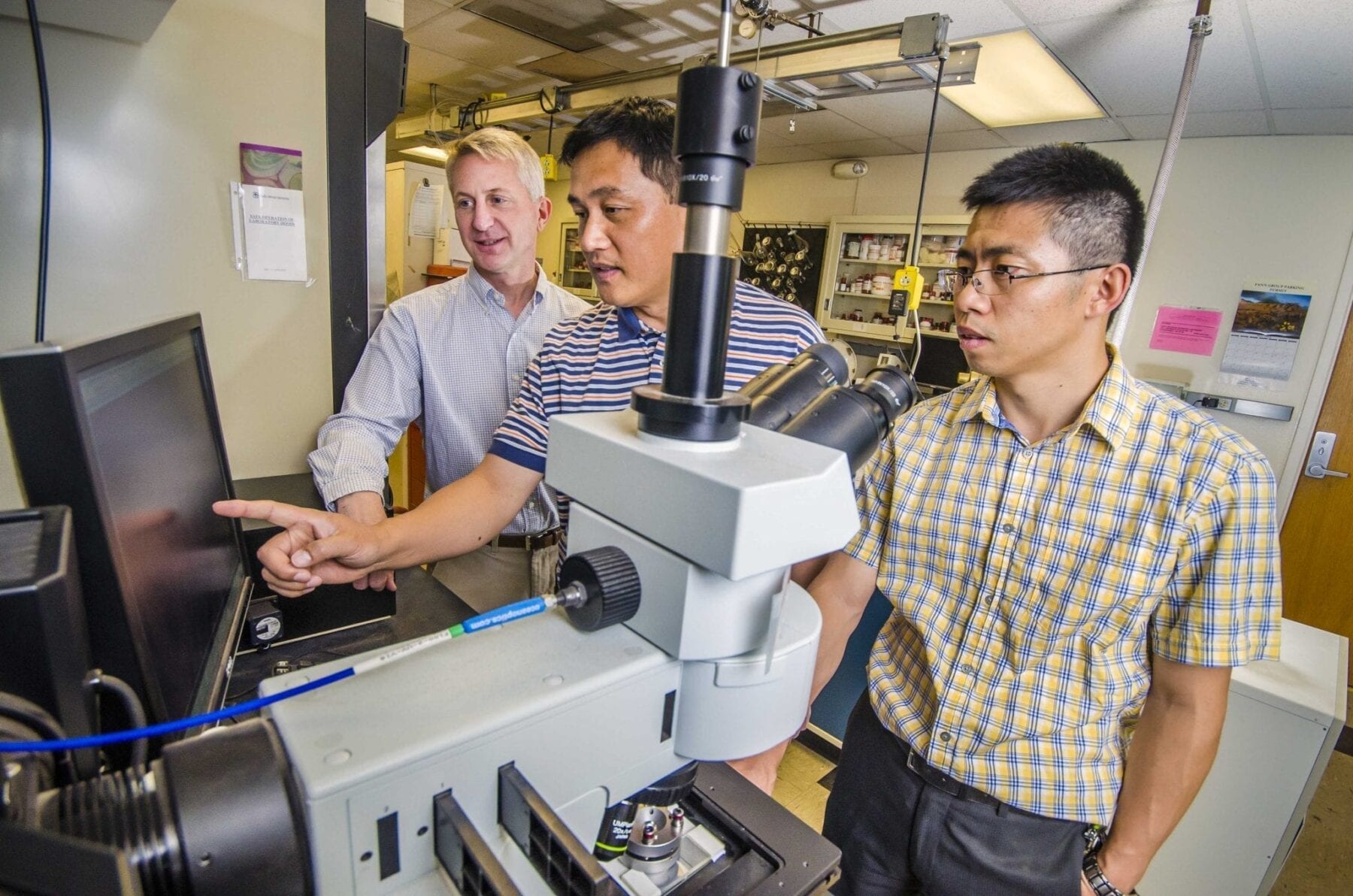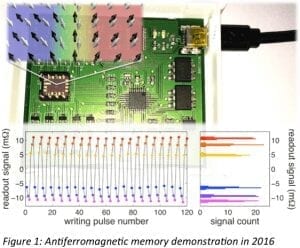
Researchers using powerful supercomputers have found a way to generate microwaves with inexpensive silicon, a breakthrough that could dramatically cut costs and improve devices such as sensors in self-driving vehicles.
“Until now, this was considered impossible,” said C.R. Selvakumar, an engineering professor at the University of Waterloo who proposed the concept several years ago.
High-frequency microwaves carry signals in a wide range of devices, including the radar units police use to catch speeders and collision-avoidance systems in cars.
The microwaves are typically generated by devices called Gunn diodes, which take advantage of the unique properties of expensive and toxic semiconductor materials such as gallium arsenide.
When voltage is applied to gallium arsenide and then increased, the electrical current running through it also increases – but only to a certain point. Beyond that point, the current decreases, an oddity known as the Gunn effect that results in the emission of microwaves.
Lead researcher Daryoush Shiri, a former Waterloo doctoral student who now works at Chalmers University of Technology in Sweden, used computational nanotechnology to show that the same effect could be achieved with silicon.
The second-most abundant substance on earth, silicon would be far easier to work with for manufacturing and costs about one-twentieth as much as gallium arsenide.
The new technology involves silicon nanowires so tiny it would take 100,000 of them bundled together to equal the thickness of a human hair.
Complex computer models showed that if silicon nanowires were stretched as voltage was applied to them, the Gunn effect, and therefore the emission of microwaves, could be induced.
“With the advent of new nano-fabrication methods, it is now easy to shape bulk silicon into nanowire forms and use it for this purpose,” said Shiri.
Selvakumar said the theoretical work is the first step in a development process that could lead to much cheaper, more flexible devices for the generation of microwaves.
The stretching mechanism could also act as a switch to turn the effect on and off, or vary the frequency of microwaves for a host of new applications that haven’t even been imagined yet.
“This is only the beginning,” said Selvakumar, a professor of electrical and computer engineering. “Now we will see where it goes, how it will ramify.”
Learn more: Silicon breakthrough could make key microwave technology much cheaper and better
The Latest on: Computational nanotechnology
[google_news title=”” keyword=”computational nanotechnology” num_posts=”10″ blurb_length=”0″ show_thumb=”left”]
via Google News
The Latest on: Computational nanotechnology
- A guide for early-career researchers in computational scienceon May 7, 2024 at 10:27 am
In recent years, a growing number of students have embraced scientific computation as an integral component of their graduate research. Yet since many of them are new to the field, they often have ...
- Microbiome studies help explore treatments for genetic disorderson May 7, 2024 at 6:31 am
A collaboration has led to the identification, in a bacterium of the intestine, of new CRISPR-Cas9 molecules that could have a clinical potential to treat genetic diseases such as retinitis pigmentosa ...
- Nanotechnology in Therapeuticson May 6, 2024 at 4:59 pm
Nanomedicine. 2012;7(8):1253-1271. Although passive targeting approaches form the basis of clinical therapy, they suffer from several limitations. Ubiquitously targeting cells within a tumor is ...
- Imec.xpand raises $320M for fund to invest in semiconductors and nanotechnologyon May 2, 2024 at 7:04 am
Imec.xpand, a chip and nanotech-focused venture capital fund, announced the launch of a new $320 million fund today.
- New class of spongy materials can self-assemble into precisely controllable structureson April 30, 2024 at 8:02 am
A team of researchers led by the University of Massachusetts Amherst has drawn inspiration from a wide variety of natural geometric motifs—including those of 12-sided dice and potato chips—in order to ...
- Nature Nanotechnologyon April 29, 2024 at 5:00 pm
Nature Nanotechnology is a multidisciplinary journal that publishes papers of the highest quality and significance in all areas of nanoscience and nanotechnology. The journal covers research into ...
- 11 Best Nanotechnology Stocks To Invest Inon April 13, 2024 at 3:02 am
In this piece, we will take a look at the 11 best nanotechnology stocks to invest in. If you want to skip our introduction to the nanotechnology sector and how it covers a variety of applications ...
- Aims & Scopeon April 11, 2024 at 12:37 pm
Nature Nanotechnology is an interdisciplinary ... chemistry and biology, including computational work and simulations, through to the development of new devices and technologies for applications ...
- Why is Computer Modeling Important to Nanoscience Research?on April 10, 2024 at 5:00 pm
Experimental studies in nanoscience face limitations due to costs, slow processes, and the difficulty of conducting and controlling experiments. 3 Computational algorithms, however, facilitate the ...
via Bing News










